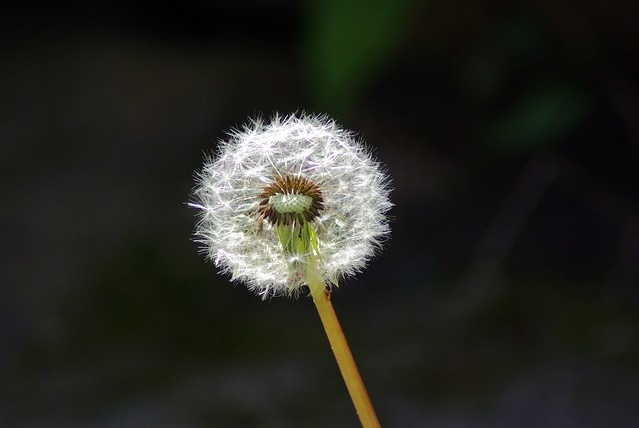Royalty-free images by Mike1 — No. 82 of over 1200 images

Dandelion Parachute Ball, Shenandoah National Park, Virginia, May 12, 2009
Taraxacum (/təˈræksəkʊm/) is a large genus of flowering plants in the family Asteraceae, which consists of species commonly known as dandelions. The genus is native to Eurasia and North America. The common name dandelion (from French dent-de-lion, meaning “lion’s tooth”) is given to members of the genus. Like other members of the family Asteraceae, they have very small flowers collected together into a composite flower head. Each single flower in a head is called a floret. In part due to their abundance along with being a generalist species, dandelions are one of the most vital early spring nectar sources for a wide host of pollinators. Many Taraxacum species produce seeds asexually by apomixis, where the seeds are produced without pollination, resulting in offspring that are genetically identical to the parent plant.
The flower heads mature into spherical seed heads sometimes called blowballs or clocks (in both British and American English) containing many single-seeded fruits called achenes. Each achene is attached to a pappus of fine hair-like material which enables wind-aided dispersal over long distances.
A number of species of Taraxacum are seed-dispersed ruderals that rapidly colonize disturbed soil, especially the common dandelion (T. officinale), which has been introduced over much of the temperate world. After flowering is finished, the dandelion flower head dries out for a day or two. The dried petals and stamens drop off, the bracts reflex (curve backwards), and the parachute ball opens into a full sphere. When development is complete, the mature seeds are attached to white, fluffy “parachutes” which easily detach from the seedhead and glide by wind, dispersing.
The seeds are able to cover large distances when dispersed due to the unique morphology of the pappus which works to create a unique type of vortex ring that stays attached to the seed rather than being sent downstream. In addition to the creation of this vortex ring, the pappus can adjust its morphology depending on the moisture in the air. This allows the plume of seeds to close up and reduce the chance to separate from the stem, waiting for optimal conditions that will maximize dispersal and germination.
I am sharing some of my public domain images in periodic blog posts.
- This image is also shared as public domain on Pixabay and Flickr as “Winter in the Ozarks.”
- Images are being shared in the sequence they were accepted by Pixabay, a royalty-free image sharing site.
- Only images specifically identified as such are public domain or creative commons on our pages.
- All other images are copyright protected by me, creative commons, or used under the provisions of fair use.

